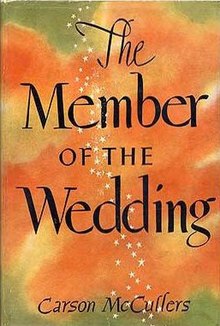Our semester started nearly a hundred years ago with the Jazz Age lyricism of F. Scott Fitzgerald, and it ends with one of this year's most highly-anticipated releases, Colson Whitehead's The Nickel Boys, which even made it on to President Obama's summer reading list. One major reason that so many readers are eager to get their hands on this latest book is that its predecessor, The Underground Railroad, won the 2017 Pulitzer Prize and the 2016 National Book Award (two of the nation's three major book prizes), as well as the Arthur C. Clarke Award for science fiction, and made numerous year-end best lists.
Like The Underground Railroad, The Nickel Boys serves as a reckoning with our nation's inhumane history towards African Americans. This time, the subject matter is a little closer to our present time, namely Florida's Dozier School for Boys, a reform school known to locals as Nickel Academy. Despite persistent rumors of mistreatment of residents by staff, the school remained open for more than a century, finally being closed by the state in 2011, after which 55 bodies were found buried on the grounds. While Whitehead first heard the story of the Dozier School in 2014, he was reluctant to begin work on another serious project. As he tells Vanity Fair, "I didn't want to do another heavy book. The Underground Railroad took a lot from me. I didn't want to deal with such depressing material again." The 2016 election changed his mind, however. Faced with a sudden, alarming change in our nation's direction, Whitehead confessed that he "felt compelled to make sense of where we were as a country." Finally, while Whitehead has made use of science fiction and fantasy tropes in some of his previous books like The Underground Railroad and Zone One (a zombie apocalypse novel), he made the conscious choice to work in a more strict realist mode this time around.
Here's a breakdown of our final classes on The Nickel Boys:
- Tues. November 26: Prologue, Chapters 1–4
- Thurs. November 28: No Class — Thanksgiving
- Tues. December 3: Chapters 5–12
- Thurs. December 5: Chapters 13–16, Epilogue
And here are a few supplemental resources related to the novel:
- Frank Rich, "In ‘The Nickel Boys,’ Colson Whitehead Depicts a Real-Life House of Horrors" in The New York Times [link]
- Maureen Corrigan, "Rooted In History, 'The Nickel Boys' Is A Great American Novel" on NPR's Fresh Air: [link]
- Michael Schaub, "For The 'Nickel Boys,' Life Isn't Worth 5 Cents" on NPR [link]
- Tim Adams, "The Nickel Boys by Colson Whitehead – Brutal Justice" in The Guardian [link]
- Ron Charles, "In Colson Whitehead's 'The Nickel Boys,' an Idealistic Black Teen Learns a Harsh Reality" in The Washington Post [link]
- Constance Grady, "Colson Whitehead's Spare, Riveting, Horrifying Nickel Boys" in VOX [link]
- Art Edwards, "The Carrot and the Stick: On Colson Whitehead's 'The Nickel Boys'" in Los Angeles Review of Books [link]
- "Colson Whitehead Talks Hope, Despair, and Fighting the Power in 'The Nickel Boys'" in Vanity Fair [link]


















